
- For PC
- For MAC
- For Linux
- OS: Windows 7 SP1/8/10 (64 bit)
- Processor: Dual-Core 2.2 GHz
- Memory: 4GB
- Video Card: DirectX 10.1 level video card: AMD Radeon 77XX / NVIDIA GeForce GTX 660. The minimum supported resolution for the game is 720p.
- Network: Broadband Internet connection
- Hard Drive: 17 GB
- OS: Windows 10/11 (64 bit)
- Processor: Intel Core i5 or Ryzen 5 3600 and better
- Memory: 16 GB and more
- Video Card: DirectX 11 level video card or higher and drivers: Nvidia GeForce 1060 and higher, Radeon RX 570 and higher
- Network: Broadband Internet connection
- Hard Drive: 95 GB
- OS: Mac OS Big Sur 11.0 or newer
- Processor: Core i5, minimum 2.2GHz (Intel Xeon is not supported)
- Memory: 6 GB
- Video Card: Intel Iris Pro 5200 (Mac), or analog from AMD/Nvidia for Mac. Minimum supported resolution for the game is 720p with Metal support.
- Network: Broadband Internet connection
- Hard Drive: 17 GB
- OS: Mac OS Big Sur 11.0 or newer
- Processor: Core i7 (Intel Xeon is not supported)
- Memory: 8 GB
- Video Card: Radeon Vega II or higher with Metal support.
- Network: Broadband Internet connection
- Hard Drive: 95 GB
- OS: Most modern 64bit Linux distributions
- Processor: Dual-Core 2.4 GHz
- Memory: 4 GB
- Video Card: NVIDIA 660 with latest proprietary drivers (not older than 6 months) / similar AMD with latest proprietary drivers (not older than 6 months; the minimum supported resolution for the game is 720p) with Vulkan support.
- Network: Broadband Internet connection
- Hard Drive: 17 GB
- OS: Ubuntu 20.04 64bit
- Processor: Intel Core i7
- Memory: 16 GB
- Video Card: NVIDIA 1060 with latest proprietary drivers (not older than 6 months) / similar AMD (Radeon RX 570) with latest proprietary drivers (not older than 6 months) with Vulkan support.
- Network: Broadband Internet connection
- Hard Drive: 95 GB
The G.91R is the reconnaissance version of a light Italian jet-powered attack aircraft that was designed by the standards set by the newly formed NATO in the early 1950s. Although the aircraft wasn’t exceptional in it’s intended role, it was liked by both pilots and ground crews for being reliable and easy to fly. It served well into the 70s as a military aircraft and up the 80s as an acrobatic airplane. During its operational service, it was employed by several air forces, such as Italy, Germany, Portugal and Greece.
Several years after NATO was formed, a requirement for a new light jet attack aircraft was issued in the form of a competition in 1953. The intention was to standardize the types of aircraft used by NATO members, an idea that tried to be implemented in not just aviation, but nearly all military branches. Several design bureaus entered the competition, with Fiat’s design being proclaimed the winner.
The new aircraft, designated as G.91, while being a unique Italian design, was also influenced by the F-86K, an aircraft Fiat was already producing under licence. This design choice lead to Fiat not having to completely restructure the production process in order to adapt it for the manufacturing of new parts, thus in turn saving on production cost and time.
The G.91 is remembered for being sturdy, nimble, very easy to fly and maintain. It was liked by both pilots and ground crew alike for ease of use and reliability. This is backed by the fact that the aircraft had a very high efficiency ratio with only a handful of breakdowns during its operational lifetime. However, as with all things, the G.91 wasn’t perfect. The aircraft had a rather limited payload capacity and wasn’t the most stable firing platform. Although these shortcomings restricted the ground attack capabilities of the G.91, the aircraft’s redeeming qualities of reliability and ease of use, made it very popular among the ranks of the Italian, German and Portuguese air forces, whilst smaller numbers were employed by Greek and US air forces for testing purposes.
As the aircraft’s operational service was set during the cold war, it didn’t see much action in it’s lifetime. The only conflict it was used extensively in was in the Portuguese Colonial Conflict in the 60s and 70s in Africa. There, the aircraft proved to be very effective at combating the guerilla warfare employed by the nationalist movements, whilst suffering only a few losses from ground fire.
However, due to the rapid development of new technologies in aircraft engineering and newer combat aircraft making their appearance, the G.91 was subsequently decommissioned from military service throughout the 70s. And though it’s military service had come to and end, the plane refused to retire just yet. The favorable flight characteristics made the airplane a very suitable platform to perform aerobatics with. This sparked the interest of the Italian national aerobatics team, who used slightly modified G.91s in their performances up until 1982, before the plane was ultimately retired for good.
The G.91 had a long and, for the most part, peaceful service time of over 35 years in which it struck fear into the hearts of the enemy, and spread joy to delighted airshow spectators alike. In total, around 750 G.91s were produced between 1956 and 1977.
In War Thunder, the G.91 will continue to delight our pilots just like the real thing did back in the day. Don’t underestimate the G.91 simply because it was tailored for ground attack! The G.91 is able to reach a max speed of 1068 kph at sea level, placing it among the faster jet aircraft in the game. Apart from that, both newcomers and hardened veterans of high-speed jet combat will appreciate the agility provided by the sturdy G.91 airframe and will quickly become inseparable from it.
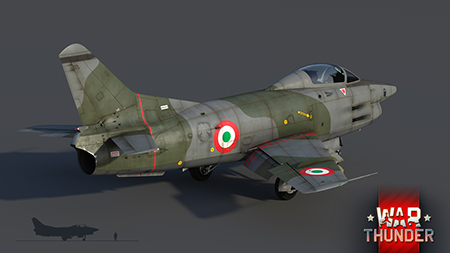 |
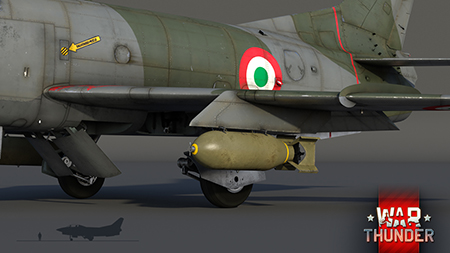 |
To engage enemy ground targets, the G.91 features a respectable array of secondary armaments ranging from HVAR rocketpods to a pair of bombs. To deal with soft targets and enemy aircraft, the G.91 is equipped with four M3 .50 cal Browning machine guns with 300 rounds per gun, mounted in the nose section.
Download Wallpaper: 1280x1024 | 1920x1080 | 2560x1440
The G.91 will come to the game in two variants - the pre-production (pre-series) and R/1. The latter one differing from the pre-series in being outfitted with the slightly more powerful Bristol Orpheus Mk.803 engine and being equipped with camera equipment in the nose for reconnaissance missions. Both versions will represent the pinnacle of Italian aircraft design in War Thunder’s upcoming update 1.69 “Regia Aeronautica”.
Stay tuned to the news to find out what’s still to come in the next major update.
Check out other Development blogs:
Preorder Italian Premium Aircraft!
The War Thunder Team



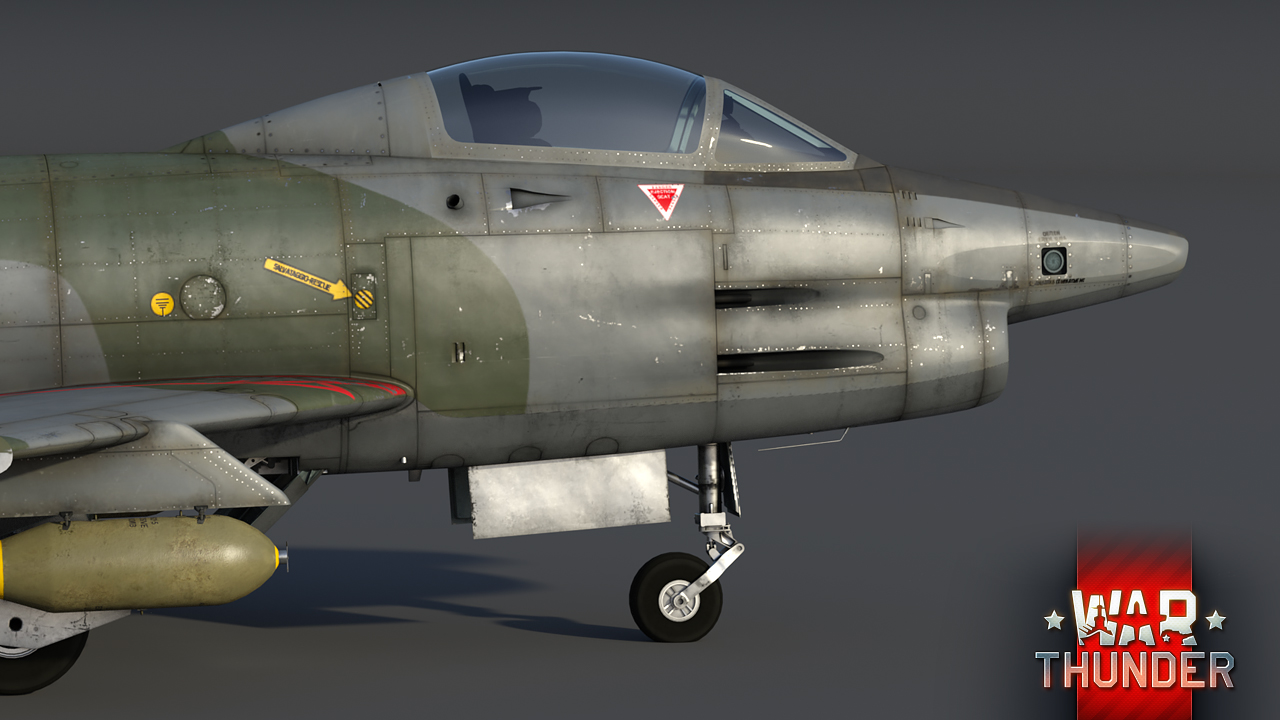
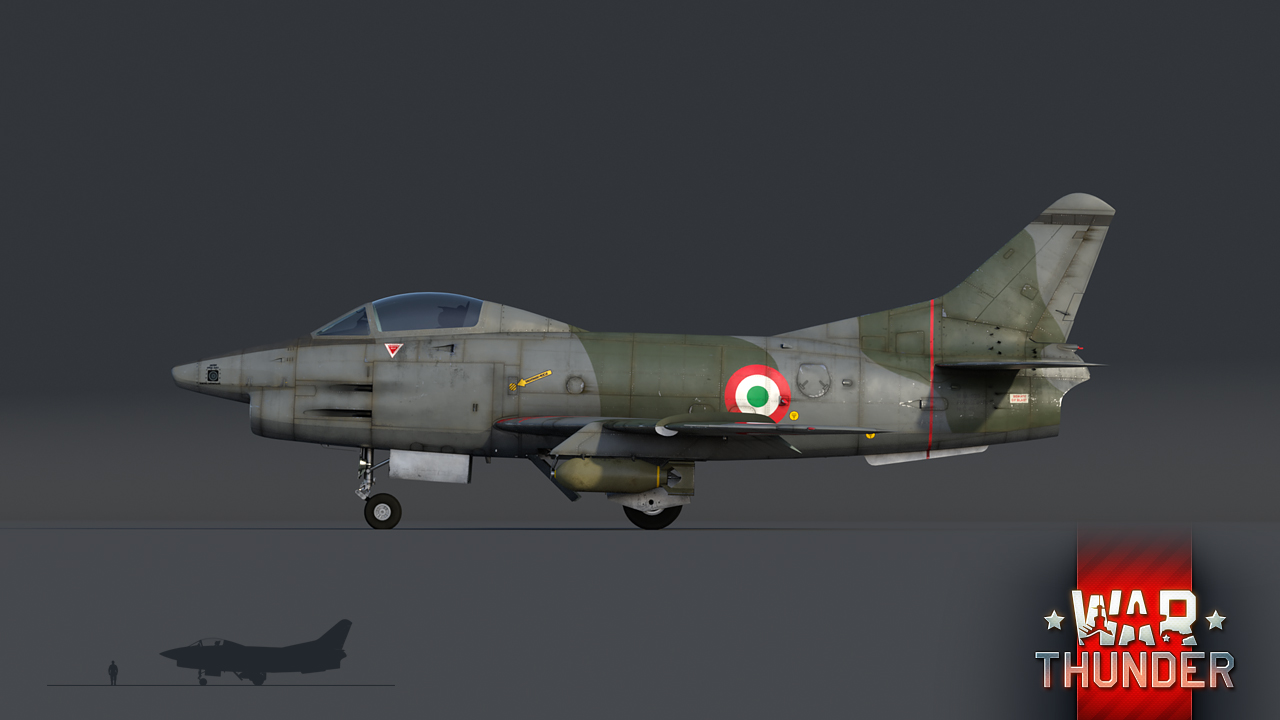
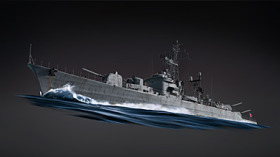



Comments (92)
Why cant we just have 1 shot kill logic in the game? Like .50 cals work like glock 18 in war thunder compare to the real 50s
sick jet
So the april fools event was also fot testing rocket pods?
"will appreciate the agility provided by the sturdy G.91 airframe and will quickly become inseparable from it." *Rips at 800kph in a turn*
Hi,Would there be manual engine controls coming soon for fighter and bomber jet planes for sb?
Gaijin,Help can you please add a control save scheme setup for the ps4 import and export control settings files.So we can switch our controller from using a Dpad/mouse & keyboard controller to a joystick for Sim and save the scheme settings & switch control back to using mouse aiming for AB/Rb?After all PC players have this features without them having to reset there control scheme setup for AB&RB gameplay,but we ps4 players don't have it.Please can you implement this on the next ...
Submit a complaint